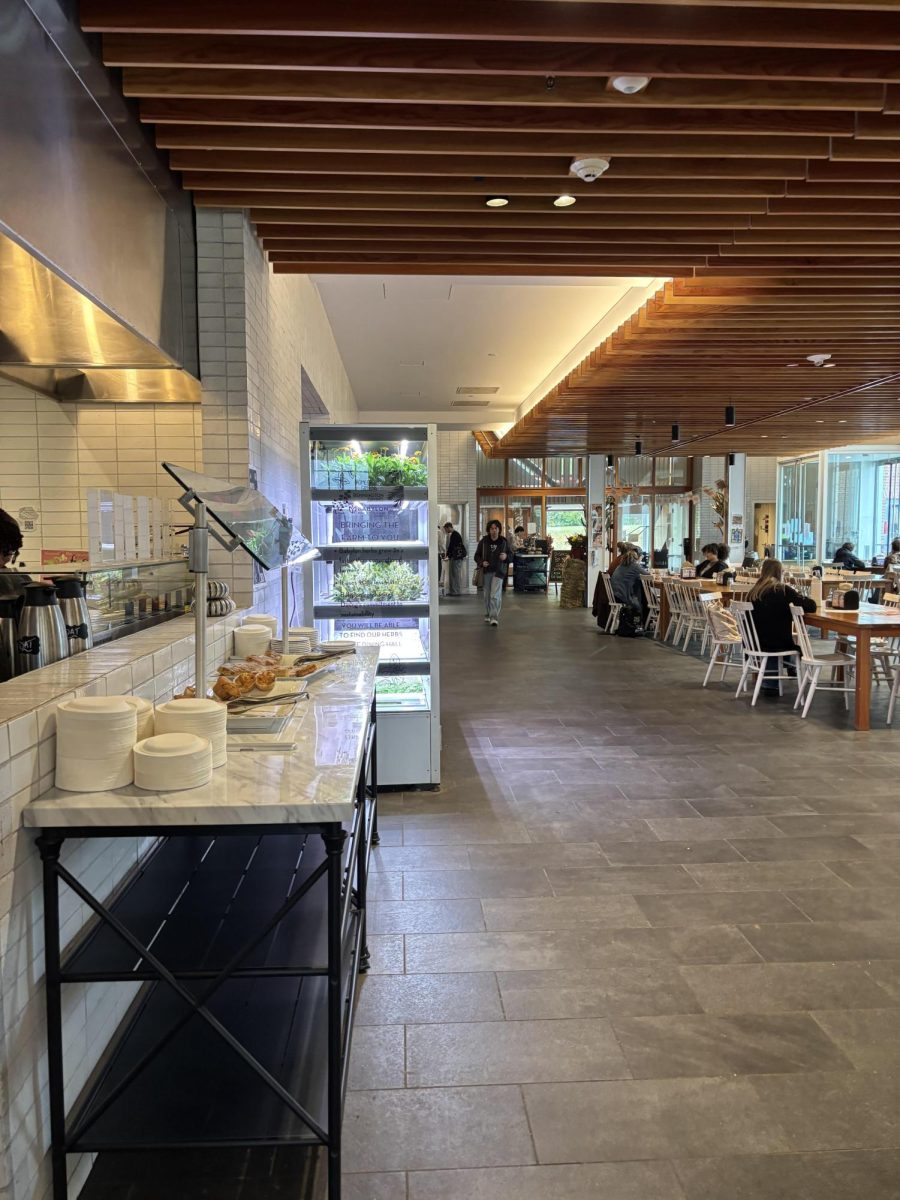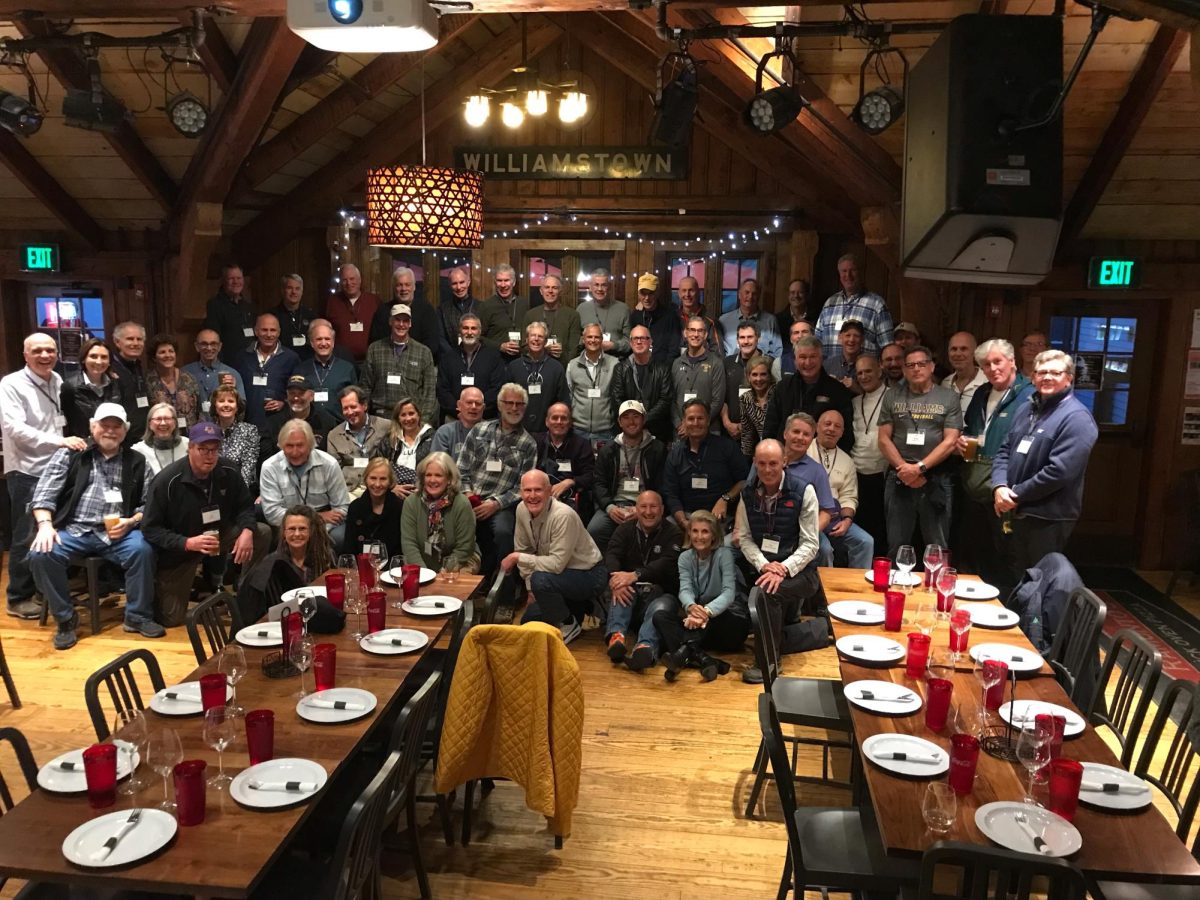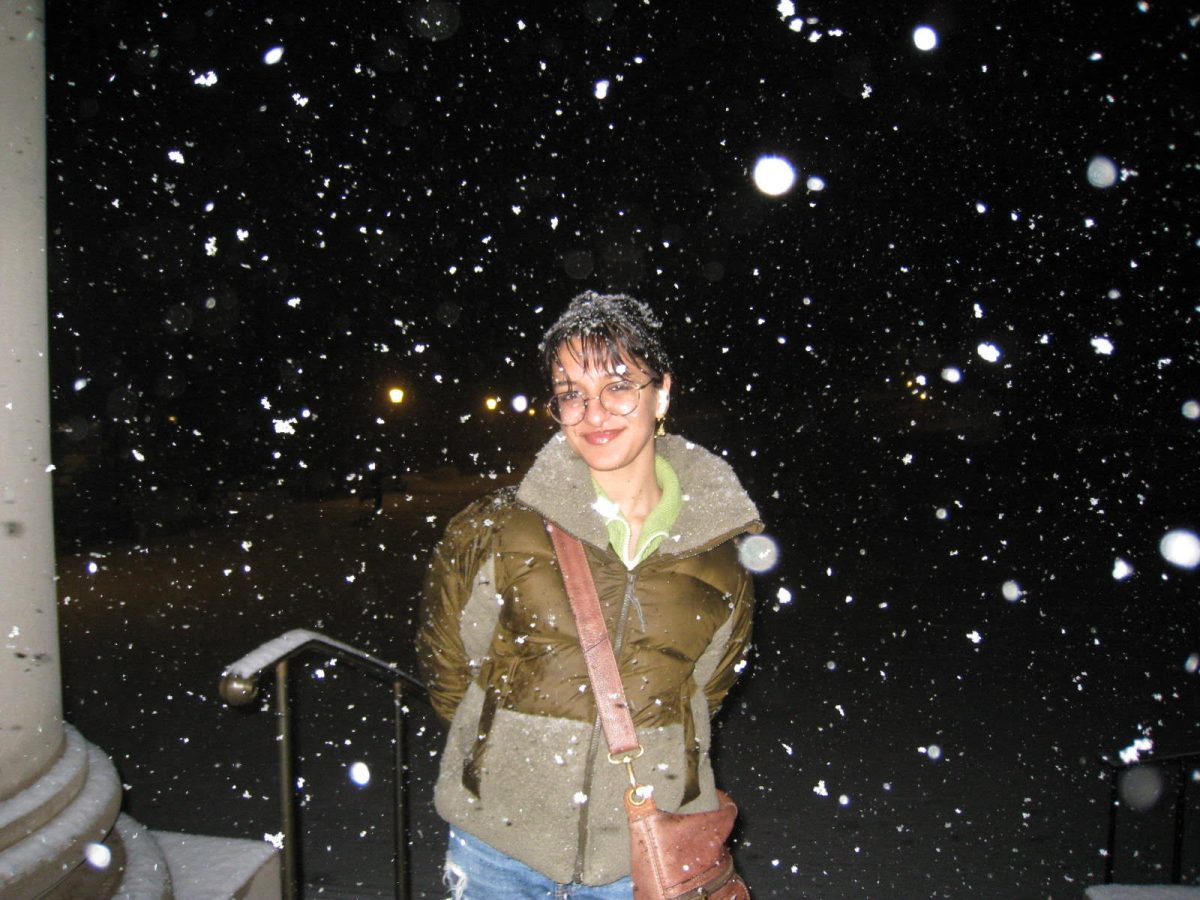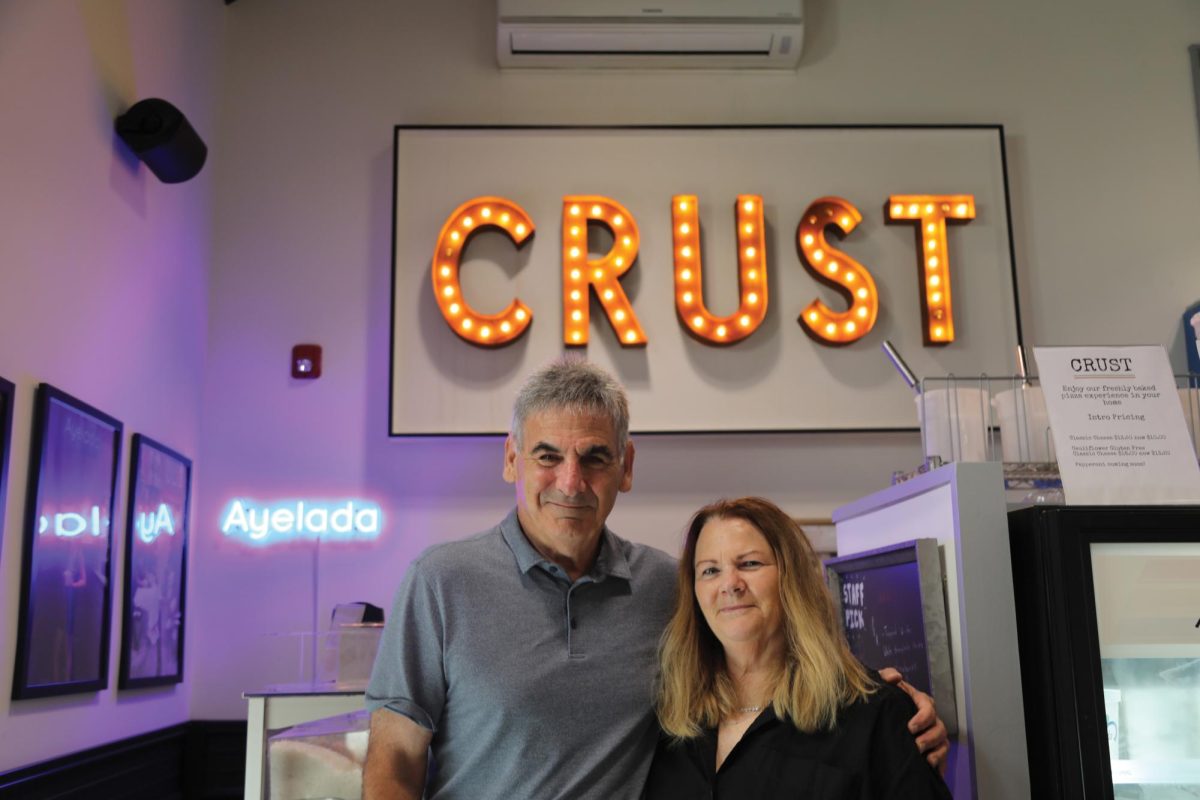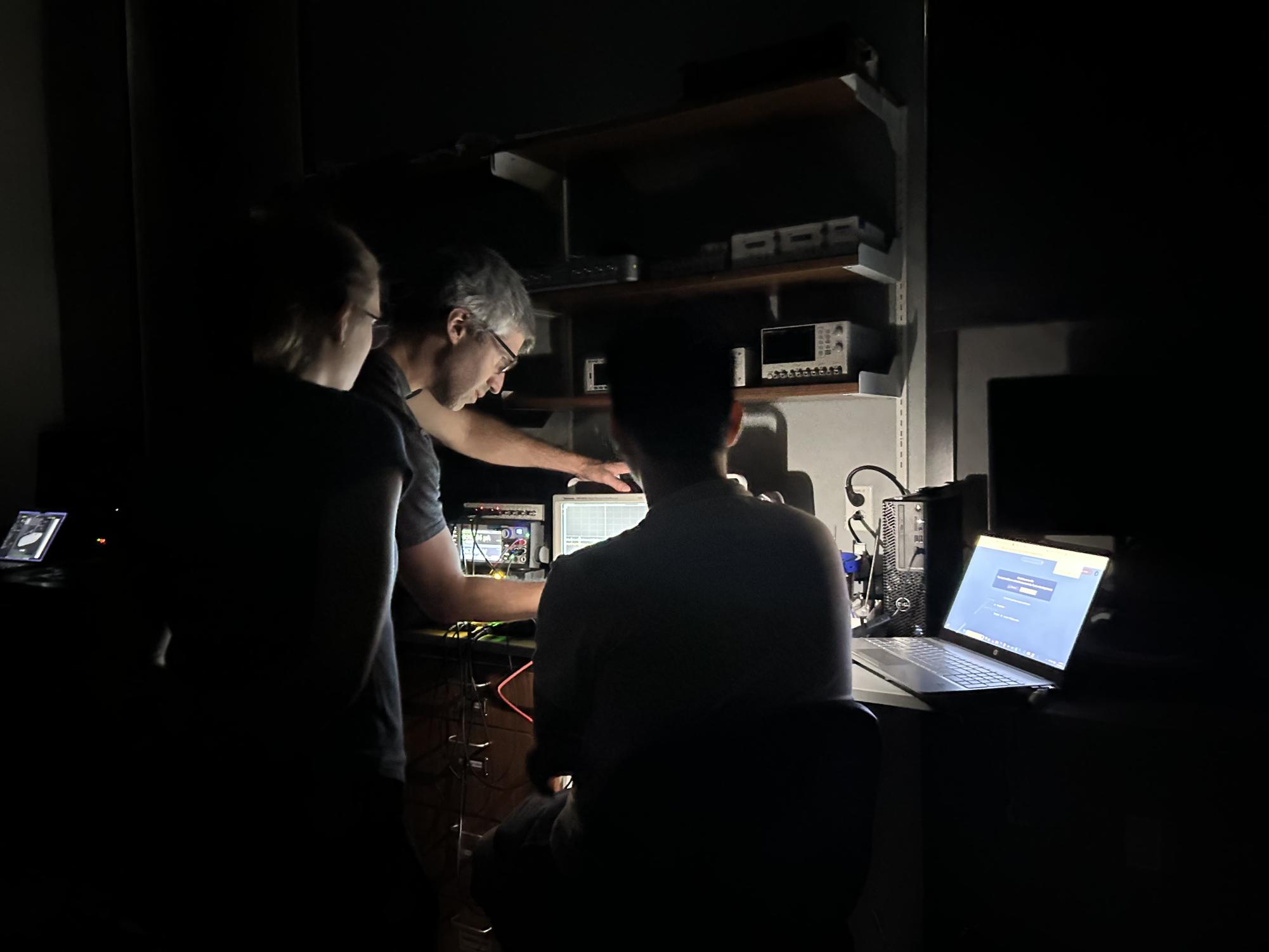
For students working with Associate Professor of Physics Graham Giovanetti, research in the lab takes on a particularly cosmic flavor.
Giovanetti’s research specializes in particle physics. His lab contributes to DarkSide-20k, an international collaborative project dedicated to the detection of dark matter, a hypothetical form of matter that interacts with neither light nor other electromagnetic radiation. Its existence is implied by gravitational effects that cannot be explained without its presence. Our understanding of gravity is contingent on the theory that dark matter both exists and composes roughly 85 percent of all matter in the universe. Proving its existence would support known theories, while its nonexistence would necessitate new laws of gravity.
DarkSide-20k is a liquid argon time projection chamber located beneath the highest peak in the Apennine Mountains at the Gran Sasso National Laboratory in the province of L’Aquila, Italy. It is located deep underground to prevent interference from sources of particle noise, like solar radiation.
According to Jason Lu ’26, a research assistant in Giovanetti’s lab, the DarkSide project to which Giovanetti and his research assistants contribute intends to use 20,000 kilograms of liquid argon — a particle-sensitive fluid — in the presence of applied electric and magnetic fields. This will be done to detect weakly interacting massive particles (WIMPs), which are considered one of the leading candidates for the identity of dark matter. If a collision between an argon atom and a WIMP occurs, it will be measured by an array of sensors surrounding the argon tank. The detection of these particles could contribute to the discovery of dark matter.
Giovanetti expressed excitement about his cutting-edge research. “It would be amazing to discover new physics,” Giovanetti wrote in an email to the Record. “But what motivates me daily is that building these detectors requires lots of novel, creative solutions to challenging technical problems. These problems are fun to work on, and their solutions can have applications broader than just particle physics.” Indeed, the research assistants in Giovanetti’s lab spend much of their time troubleshooting sensors and cooling systems that can be used outside of DarkSide-20k.
Lu, a math and physics double major, has been a research assistant in Giovanetti’s lab since his first year at the College. Last summer, Lu and three other research assistants in Giovanetti’s lab went to Italy and spent the summer working with DarkSide-20k’s research team to test a cryogenic system for the project. This was not Lu’s first encounter with cyrogenics. During his first year in Giovanetti’s lab, Lu remembers working on automating a cryogenics system to liquify argon, which is is a gas at room temperature and must reach minus 185.8 degrees Celsius to become a liquid.
According to Lu, the argon not only had to be chilled below its liquifying temperature, which required a complex liquid nitrogen plumbing system, but the temperature had to be stable. “The reason we want a stable temperature in the first place is that when a particle comes zipping through a detector, it deposits some of its kinetic energy, which can then be converted to light energy, free charges, and heat energy,” Lu said. “And if you make your detector super cold, you can minimize that random heat energy, which makes it easier to detect the other two.” The project was additionally challenging because if the argon heated above its boiling point, the gas could expand rapidly and explode, Lu explained.
While Lu acknowledged the low likelihood of the project’s successful detection of dark matter, he hopes that, through this and other international collaborative efforts, it could eventually contribute to a breakthrough discovery.
“For the same reason study abroad is super important to liberal arts, learning to collaborate with these giant international institutions, learning to help each other, is what I think makes this project so fruitful,” he said. “DarkSide itself grew out of several earlier mega projects that laid the groundwork for what we’re doing now… When people decide to pool their money together, to pool their resources together, it makes things a lot easier.”



